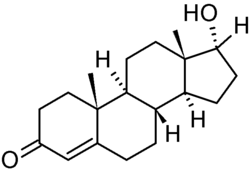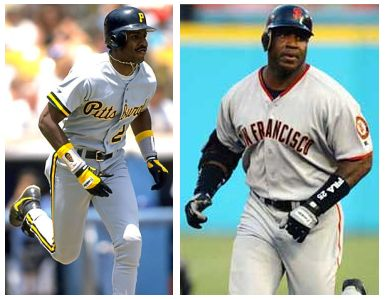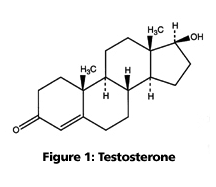Introduction to Testosterone Discovery and Synthesis Historical Significance
References The Future of Testosterone

-Carbon atoms have four bonds to other C-atoms, to H-atoms, or to O-atoms
-Of the 19 C-atoms in testosterone, all but 2 lie in the “skeleton” of the molecule.
-Three hexagonal (6) C rings and one pentagonal (5) C ring are fused together at the carbons to a form a framework called an androstane skeleton.
-Most of the C-C bonds are single bonds however testosterone has one Carbon=Carbon double bond and there is one Carbon=Oxygen double bond found in the left corner of the above figure.
-dotted versus solid depth indicators represent the “trans” feature in which the points of fusion between rings alternate between an atom sticking up and an atom sticking down
 <!–[endif]–> -the fourth bond at these points is not necessary to maintain the framework of the skeleton and in testosterone it is occupied by Hydrogen-atoms or by methyl groups (CH3-group). The Trans ring fusions make the steroid skeleton more rigid and allows only minor movements at the ends of the arrangement.
<!–[endif]–> -the fourth bond at these points is not necessary to maintain the framework of the skeleton and in testosterone it is occupied by Hydrogen-atoms or by methyl groups (CH3-group). The Trans ring fusions make the steroid skeleton more rigid and allows only minor movements at the ends of the arrangement.
The effects of testosterone in mammals occur by way of two main mechanisms:
1) By activation of the androgen receptor
2) By conversion to estradiol and by activation of certain estrogen receptors.





